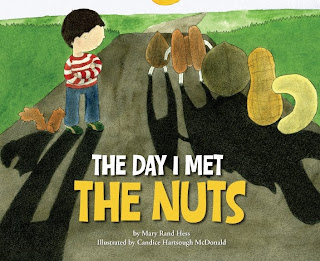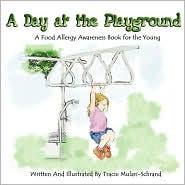Out of extreme precaution (as well as frugality), I had groceries delivered to the resort by We Go Shop. There are at least two grocery delivery services but this one looked better for us. I ordered specific foods like Cinnamon and Brown Sugar Kellogg’s Pop Tarts and Thomas’ blueberry bagels and checked the “no substitute†box. I included a note that we had several allergies to emphasize why I didn’t want substitutes. The bread that I had checked, however, was not available at the local Wal-Mart, so Amy at We Go Shop substituted another non-diary. She said she had called a relative of hers with a milk allergy to find an ingredient list which would work. I was impressed. With food in the hotel room, we were able to eat quickly, safely, and cheaply for a few meals.
Trick or treating was a different ball of wax (or whatever a chocolate-covered nut equivalent to a ball of wax would be.) One idea we had heard of was to have the children bring home all the candy they got, then set out the ones that they couldn’t have for the Nut Fairy to take and replace with some other goodie. This sounded like too much work to me and more than slightly implausible – kind of degrading to the other fairies. My alternative was to buy more than enough safe candy for us to hand out, then use the extra to swap with my children. That way, they wouldn’t feel like they had to give anything up. Thank goodness they’re not allergic to sugar!
I explained the plan to the kids before we headed out into the neighborhood and they seemed to get it. We also set the rule that no food was to be eaten until we got home. As a further precaution, I took the epipen with us. As soon as we got to the first door, however, the candy-swap plan went out the window. Quite reasonably, the kids looked through the candy distributor’s selection to tell them what they could have. On what seemed to be several occasions, I heard my son say “I can’t have that.†Then he turned and walked away. The first few times this happened, I told him to just take what was offered and reminded him that we would swap it out when we got home. He said, “No.â€
I worried that as the night went on, he would get angrier at his allergies and feel more and more rejected. Fortunately, it didn’t seem to bother him. He just ran turned away from the door and ran on to the next one. I guess the thrill of dressing as a cowboy and going around the neighborhood at night surrounded by vampires, princesses, and superheroes was more important than the candy. For that, I am grateful.
As for my 8-year-old daughter, her only concern was peanuts. When she didn’t have an alternative, she took the nut candy and later traded it with a friend that went with us.
Two weeks later, the cowboy and the witch are still working on the candy they did get. My hope is that their memories will be of dressing up, parading, and running around with their friends and not of the food that they couldn’t have.

I’m used to checking labels and the frequent disappointment that comes with that necessary task but this was too much. A healthy, allergen-free food that everyone likes is just too hard to come by and this one was now being taken from us with no warning, no bright yellow banner stating, “Now Containing Dairy!” or anything of the like.
After gathering myself and inspecting all other options only to read milk, milk, milk on all of them, I finally found another Oroweat bread: Dutch Country 100% Whole Wheat. It, by the way, isn’t nearly as tasty. I called Oroweat to complain thinking that they need to hear from their dairy allergic customers. The nice lady at customer service sympathized and promised to pass on my concern to the powers that be. She also sent me coupons for any of their products . . . excluding Dutch Country.
Cody the Allergic Cow by Nicole Smith
The BugaBees: Friends with Food Allergies by Amy Recob
The Day I Met the Nuts by Mary Rand Hess
Food Allergies by Jason Glaser
A Day at the Playground: A Food Allergy Awareness Book for the Young by Tracie Mulari-Schrand
Taking Food Allergies to School by Ellen Weiner (Part of Kim Gosselin’s Special Kids in School Series)
My husband and I both agreed that we wanted to reach out and connect with other families with food allergies.We receive a lot of encouragement, ideas, and moral support by reading blogs of other food allergic families and we felt that we wanted to contribute too. We have two happy and healthy children who are the lights of our lives.They both also happen to have life-threatening food allergies which has dramatically changed the way our family eats.
Our son, age 3, is the most severe of my two food allergic children.He has multiple life-threatening food allergies to dairy, eggs, nuts, poultry, fish, pinto beans, peas, and most likely tropical fruits.He has had one actual anaphylactic reaction after accidentally taking a drink of another child’s cow’s milk.I pray that that never happens again.We avoid eating out because of the possibility of cross-contamination.
His most recent IgE test showed that his allergy levels were actually increasing.His peanut test is actually over 100 which is off the chart.My husband and I were feeling pretty down about this and I guess that’s why we wanted to reach out to others.
We have known that our son was a food allergic child since he was about 7 months old.We had him tested because he was having severe eczema and rashes.We had also noticed how his eczema would flare up after eating certain baby foods. At Thanksgiving when he was 8 months old, after eating turkey, his cheeks became bright red and rough.We didn’t know at that time that the turkey was bothering him.We actually had family photographs taken and the photographer asked if I’d like to have her retouch the photograph to take the redness out of my little guy’s cheeks!
My daughter, age 8, also has life-threatening food allergies to nuts and sesame.Honestly, I sometimes forget about the seriousness of her allergies because compared to her brother, she’s a breeze!It’s fairly easy to avoid nuts and sesame; however, we have to be vigilant about making sure she never eats them.We first discovered her food allergies when she was still very little.My husband and I were eating take-out Chinese cashew chicken.I gave her a cashew to eat.Her reaction was delayed by about an hour but she began projectile vomiting and broke out in hives.Her pediatrician said it was most likely an allergic reaction and that’s what we chalked it up to.It didn’t feel like a huge deal… so we wouldn’t eat cashews anymore, right?
Then when she was two and a half, she ate an ice cream cone with a few peanut sprinkles on the top and then we went swimming.At the pool, she started having chills and as I was holding her, I noticed her eyes and lips swelling!We rushed home and gave her Benadryl, and she was better.
Looking back, we were so naïve about dealing with food allergies.My daughter was our first experience with it; however, the extensiveness of my son’s allergies has forced us to become very well educated in the food allergy department.My goal is to share my experiences, ideas, support, and recipes for others who find themselves in the same situation.Thanks for reading!






没有评论:
发表评论